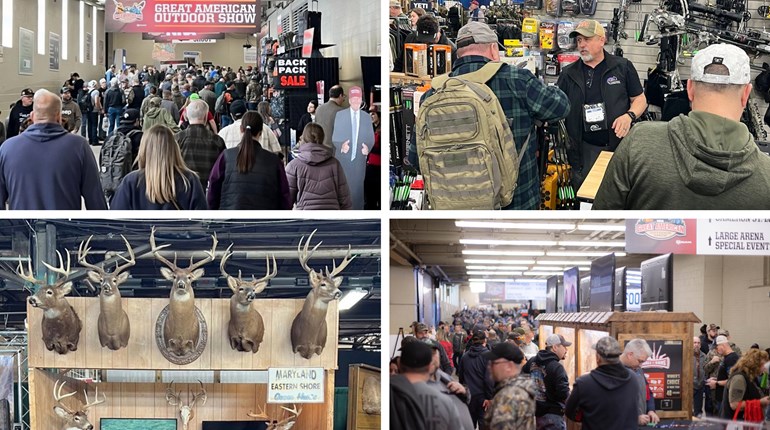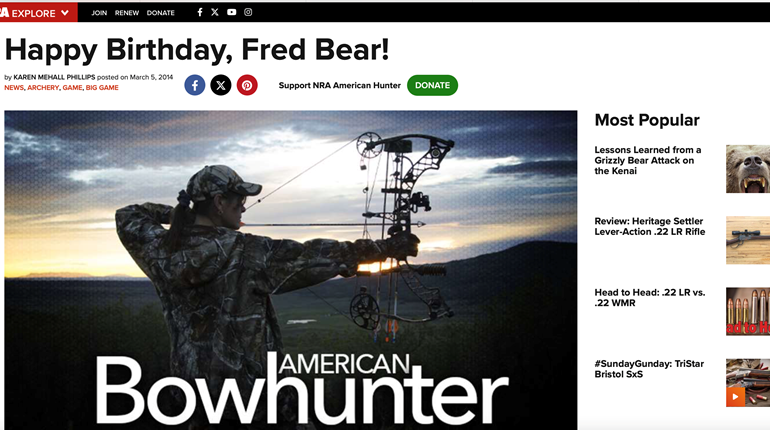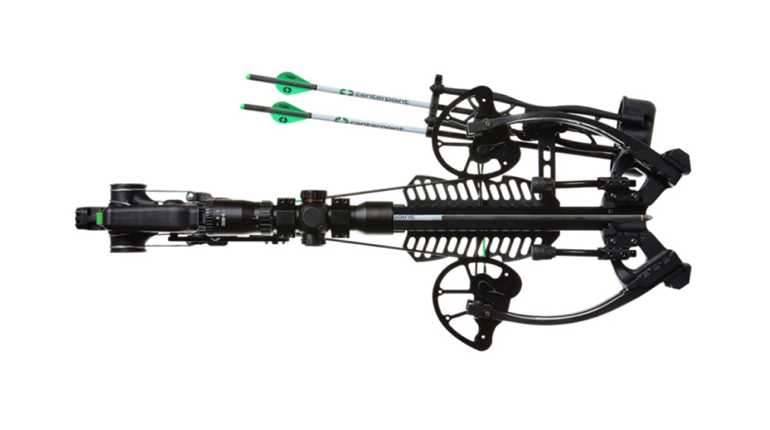
Many of you will be hunting black bear this spring, some with a bow for the first time. One question I am asked a lot about bowhunting bears is, “How much kinetic energy (K.E.) do I really need to kill a black bear?
When hunting black bears, we know that the bears of, say, Quebec (where a very big bear is a 250-pounder), are not as large as those of Alaska or western Canada (where a big bear can weigh 500 pounds). Then there are the big bears in places like California and the Carolinas, where 600- to 800-pounders as big as grizzlies live. It will take more “juice” to run your arrow through the bigger bears. The question is, how much more?
Today, most of us are shooting compound bows that produce a raw arrow speed of somewhere between 250 and 280 fps, with some blasting over the 300 fps mark. Our arrows have lightened up as well. For example, I am currently shooting a 70-pound Hoyt Carbon Matrix, 28 ½-inch Beman ICS Hunter Pro 340 carbon shafts, and 100-grain Thunderheads. Total arrow weight is 407.9 grains, and raw arrow speed is chronographed at 281 fps. The initial K.E. generated at the shot is 71.53 ft./lbs. (To determine how much initial kinetic energy your own bow-and-arrow set-up has at the shot, the formula is which is arrow weight (mass) x velocity squared, divided by 450,240.)
Most experienced bear hunters I know believe that for averaged-sized bears taken at reasonable ranges—under 40 yards—the minimum initial K.E. number is just 40 ft./lbs. What’s it take to achieve that? A compound bow that sends a light 325-grain broadhead/arrow shaft combination downrange at 245 fps generates an initial K.E. of 41.57 ft./lbs. You can do that with some compounds set at as little as 40 pounds of draw weight. This should be considered the absolute minimum and used only in very controlled situations, such as stand hunting over bait. For larger bears—including grizzlies and Alaskan brown bears—I have always used the same setup I would choose when hunting elk. My Carbon Element setup fits this bill perfectly.
However, do not forget that K.E. is not everything in the penetration game. The other scientific principle involved in the penetration equation is called momentum. Momentum is defined as “a property of a moving body that determines the length of time required to bring it to rest when under the action of a constant force.” Bowhunters don’t consider momentum as much as K.E. for several reasons, mostly because as the speed of an object changes—and after the shot an arrow begins to decelerate, meaning that for every foot of flight it is traveling at a different speed than the foot before—it is too complicated to play with in a simple discussion. What you do need to know is that, all things being equal, heavier and denser objects traveling at the same speed as lighter objects will have greater momentum. That means it is more difficult to stop them, which means they will penetrate more deeply. An easy analogy here is visualizing both a golf ball and an egg smashing into your own ribs at the same speed. Which will hurt more? That’s why I choose medium-weight, and not ultralight, arrow shafts.
There is one other factor that seriously impacts penetration on game that has nothing to do with K.E. or momentum. This is broadhead blade sharpness. There is no question that broadheads with scalpel-sharp blades slice through hair, hide, muscle and internal organs much easier than dull blades, whose rough cutting edges drag, not slice.





































